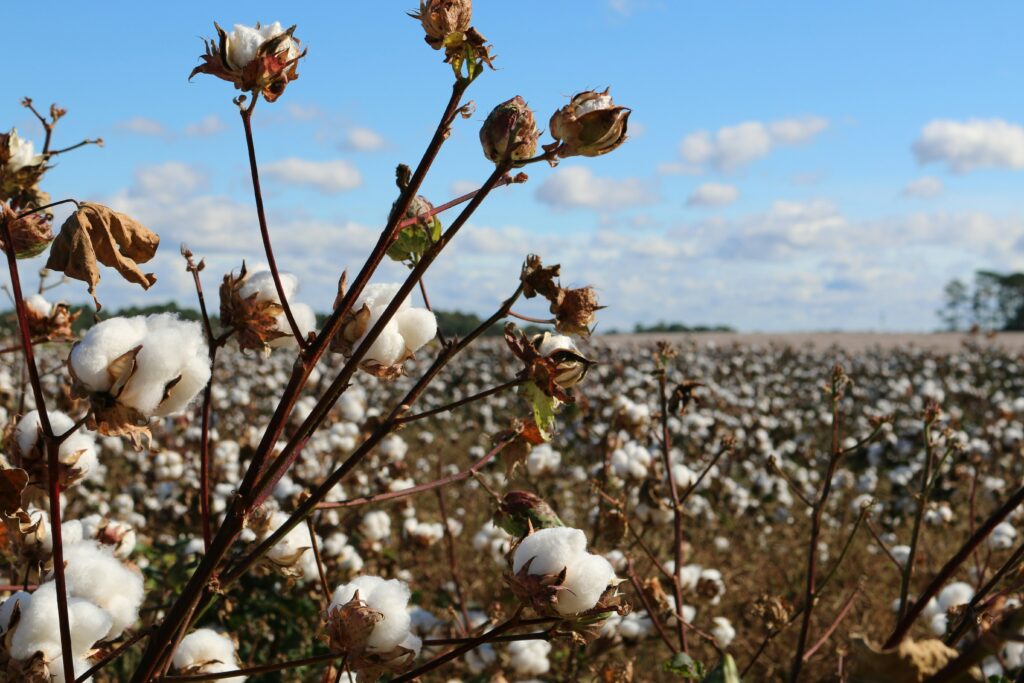In recent years, “preferred cotton”, such as organic cotton or Cotton made in Africa (CmiA), has increased to 27% of the world’s cotton production. However, most cotton is still being cultivated by means of older industrial processes which are generally unsustainable.
It is well-known that conventionally grown cotton demands a substantial quantity of arable land, energy, and water. In addition, the extensive use of chemical fertilisers and pesticides pollute local ecosystems and contribute to climate change. As a result, it has become imperative to seek an approach to cotton farming that is more environmentally sustainable.

What is Regenerative Cotton Farming?
Regenerative cotton farming is an approach to cotton cultivation that aims to restore and enhance the health of the soil, and increase biodiversity, therefore capturing carbon from the atmosphere.
In essence, this kind of farming seeks to make the land healthier, the water cleaner, and reduce the negative impact on the ecosystem.
What is the Difference Between Organic Cotton and Regeneratively Farmed Cotton?
Regenerative cotton farming is a more comprehensive approach to sustainable farming than organic cotton. While organic cotton mainly focuses on eliminating the use of synthetic pesticides and fertilisers from the farming process, regenerative cotton farming goes further by aiming to restore soil health, improve biodiversity and reduce cotton cultivation’s environmental impact.
Principles of Regenerative Cotton Farming
The principles of regenerative cotton farming include nurturing the soil, enhancing biodiversity, and working towards eliminating chemical inputs.
Soil health is central to regenerative farming. Healthy soils help increase the efficiency of water, land, and fertiliser use, as well as the amount of carbon stored by the soil. The physical, chemical, and biological properties of healthy soils foster a diverse ecosystem of beneficial organisms, mitigate erosion, absorb and store water, and cycle essential plant nutrients.

An essential part of regenerative cotton farming is crop rotation, which involves cultivating different crops on the same land in a specific sequence over multiple years, providing an array of benefits. For example, farmers may rotate cotton with corn or soybeans to infuse nitrogen into the soil, which reduces the reliance on synthetic fertilisers. By diversifying the crops, farmers can also foster more diversity in insects and soil organisms. Certain pest-resistant crops can also be used in the rotation, which suppresses the amount of cotton pests present in the cycle. Therefore, crop rotation is also an economical and strategic way to manage pests and diseases.
Biodiversity is important for ecological balance. A diverse ecosystem includes various plant species, beneficial insects, and soil microorganisms which help to reduce soil degradation and erosion as well as keep the surrounding waterways healthy for future cultivation.


The decreased use of synthetic pesticides is a result of healthier soils and more biodiverse ecosystems. Regenerative farmers often rely on natural and organic alternatives and integrated pest-management practices to enrich the soil. As a result, it also minimises harm to farmworkers and communities near cotton farms
The Future of Regenerative Cotton
Because soil health is one of the most primary environmental factors in productive cotton farming, it is expected that regenerative cotton farming practices will become increasingly popular among farmers and textile producers. To keep natural ecosystems in balance, regenerative agriculture is essential for the textile industry transition to a more sustainable future.
Check out our LinkedIn and news channel to learn more about our sustainability initiatives.

